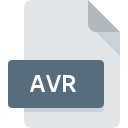.AUP3 File Extension

Audacity 3 Project File
| Developer | Audacity |
| Popularity | |
| Category | Audio Files |
| Format | .AUP3 |
| Cross Platform | Update Soon |
What is an AUP3 file?
AUP3 is a file extension commonly associated with audio projects created in Audacity, a popular open-source audio editing software.
These files are used to save and store audio recordings, edits, and project settings, making them essential for those working on audio-related projects.
More Information.
The AUP file format was initially created to serve as Audacity’s native project format. These files store various audio tracks, edits, effects, and project settings, allowing users to save their work in a format that retains all their project details and enables easy future edits.
The transition to the AUP3 format was primarily aimed at improving compatibility and performance.
Origin Of This File.
The AUP3 file extension is derived from its predecessor, the AUP file, which was introduced with the Audacity software.
Audacity has been widely used since its inception in the early 2000s, and the AUP3 format was introduced to accommodate changes and improvements in Audacity’s project structure.
File Structure Technical Specification.
AUP3 files, like their predecessor AUP files, are primarily XML-based. They contain detailed information about the audio tracks, edits, effects, and other project settings.
The XML structure allows for easy parsing and modification of project data. AUP3 files may also reference other audio files used in the project, ensuring that all necessary assets are kept together.
How to Convert the File?
Windows:
- Launch Audacity on your Windows computer.
- Open the AUP3 file by going to “File” > “Open.”
- Edit the project if needed.
- To convert, go to “File” > “Export” and choose your preferred format (e.g., MP3 or WAV).
- Configure export settings such as quality and location.
- Click “Save” to initiate the conversion process.
Linux:
- Start Audacity on your Linux machine.
- Open the AUP3 file using “File” > “Open.”
- Make any necessary edits to your audio project.
- For conversion, navigate to “File” > “Export” and select your desired format.
- Adjust export settings like quality and destination folder.
- Click “Save” to start the conversion.
Mac:
- Open Audacity on your Mac.
- Load the AUP3 file through “File” > “Open.”
- Edit your audio project as needed.
- To convert, access “File” > “Export” and pick the format you want.
- Customize export settings, including quality and save location.
- Click “Save” to convert the file to the chosen format.
Android:
- Install Audacity from the Google Play Store on your Android device.
- Open Audacity and locate the AUP3 file in the app’s file browser.
- Edit the project as necessary.
- Export the project by selecting “File” > “Export” and choosing your desired format.
- Configure export settings, then tap “Save” to convert the file.
iOS:
- Download Audacity from the App Store on your iOS device.
- Launch Audacity and use the app’s file management to find and open the AUP3 file.
- Edit your audio project if required.
- To convert, go to “File” > “Export” within Audacity and select the format.
- Customize export settings and tap “Save” to initiate the conversion process.
Advantages And Disadvantages.
Advantages:
- Versatile Editing: AUP3 files retain all project details, enabling users to revisit and modify audio projects with ease.
- Cross-Platform Compatibility: Audacity is available for Windows, Linux, Mac, Android, and iOS, ensuring compatibility across various platforms.
- Open Source: Audacity and its associated file formats are open source, making them accessible to a wide range of users.
Disadvantages:
- Size: AUP3 files can become large when containing extensive audio recordings and edits, potentially consuming significant storage space.
- Not Suitable for Final Export: While AUP3 files are excellent for project preservation and editing, they are not meant for final audio export or distribution.
How to Open AUP3?
Open In Windows
- Ensure you have Audacity installed on your Windows computer.
- Launch Audacity.
- Click on “File” in the menu bar.
- Select “Open” or “Open Recent” and browse to the location of your .AUP3 file.
- Double-click the .AUP3 file or select it and click “Open” to open it in Audacity.
Open In Linux
- Install Audacity from your Linux distribution’s software repository if it’s not already installed.
- Launch Audacity from your application menu or terminal.
- In Audacity, click on “File” in the menu bar.
- Select “Open” or “Open Recent” and navigate to your .AUP3 file.
- Double-click the .AUP3 file or click “Open” to open it.
Open In MAC
- Ensure Audacity is installed on your Mac.
- Launch Audacity from your Applications folder or Dock.
- Click on “File” in the menu bar.
- Select “Open” or “Open Recent.”
- Browse to the location of your .AUP3 file.
- Double-click the .AUP3 file or click “Open” to open it in Audacity.
Open In Android
- Install the “Audacity” app from the Google Play Store on your Android device.
- Open the Audacity app.
- Use the app’s import or open project function to locate and open your .AUP3 file from your device’s storage.
Open In IOS
- Install the “Audacity” app from the App Store on your iOS device.
- Launch the Audacity app.
- Use the app’s import or open project feature to locate and open your .AUP3 file from your device’s storage.
Open in Others
- Use Wine to run Audacity for Windows.
- Set up a virtual machine with Windows, install Audacity, and open AUP3 files within the virtual machine.













